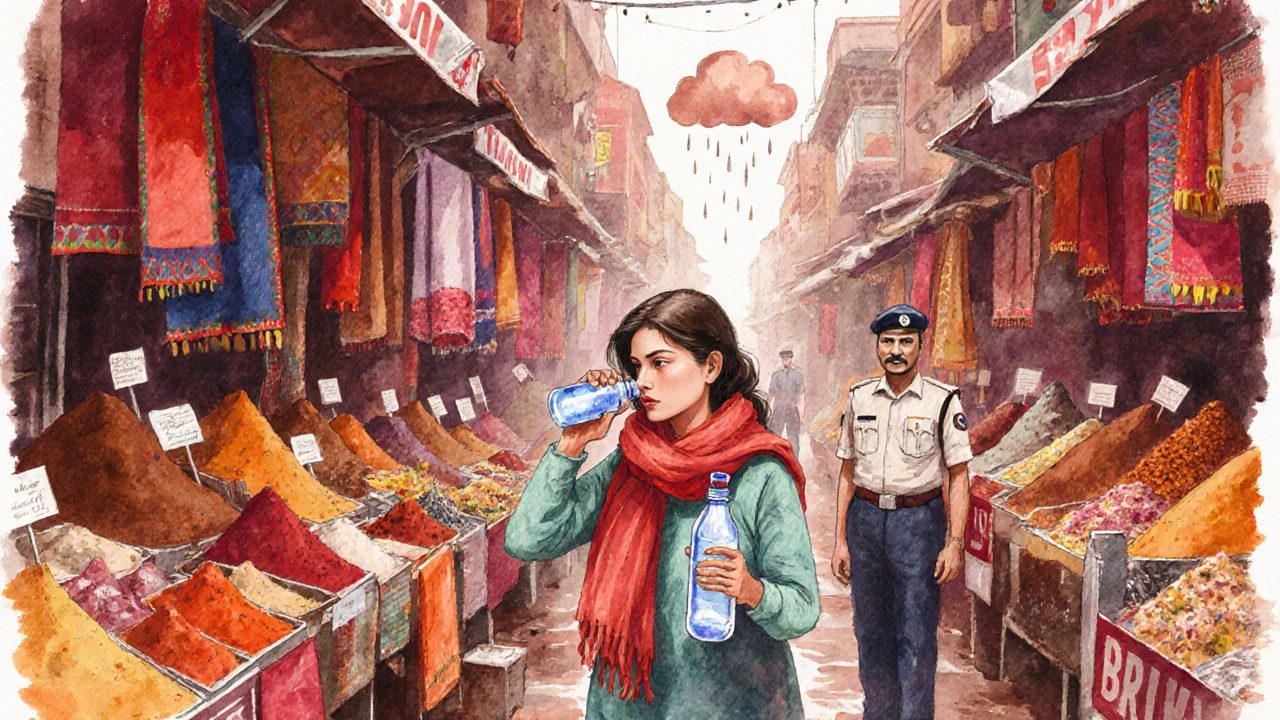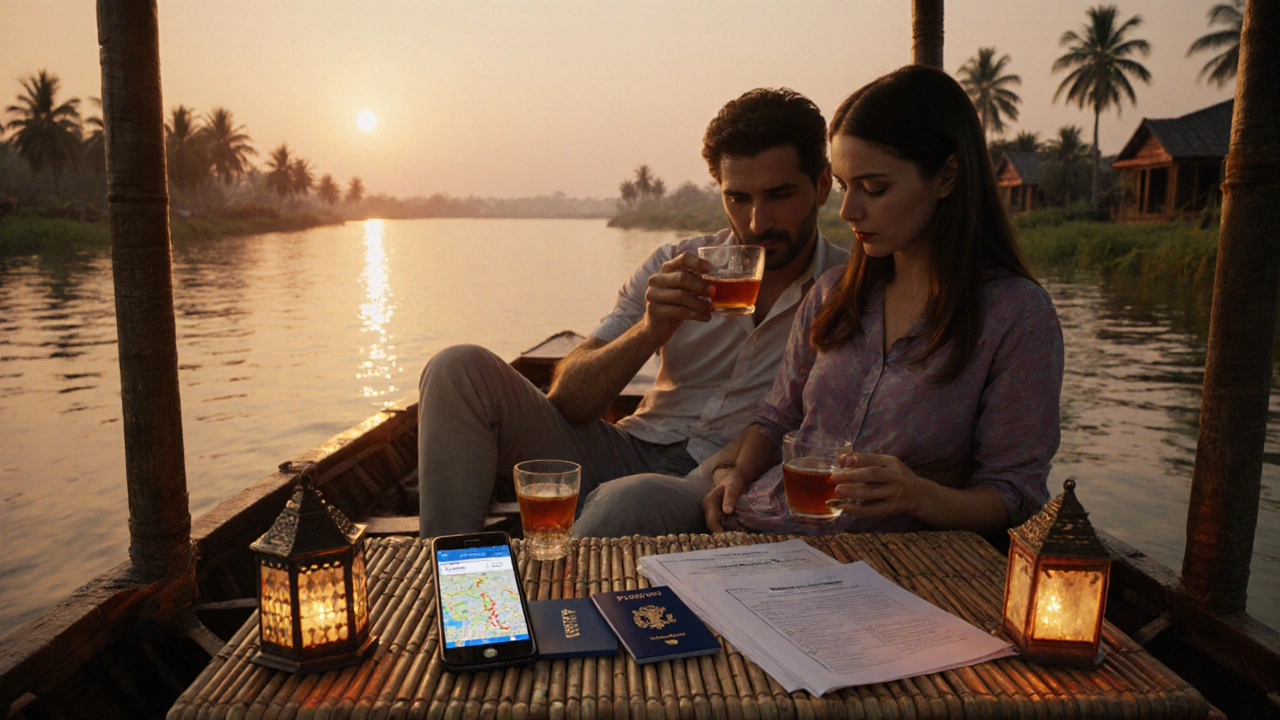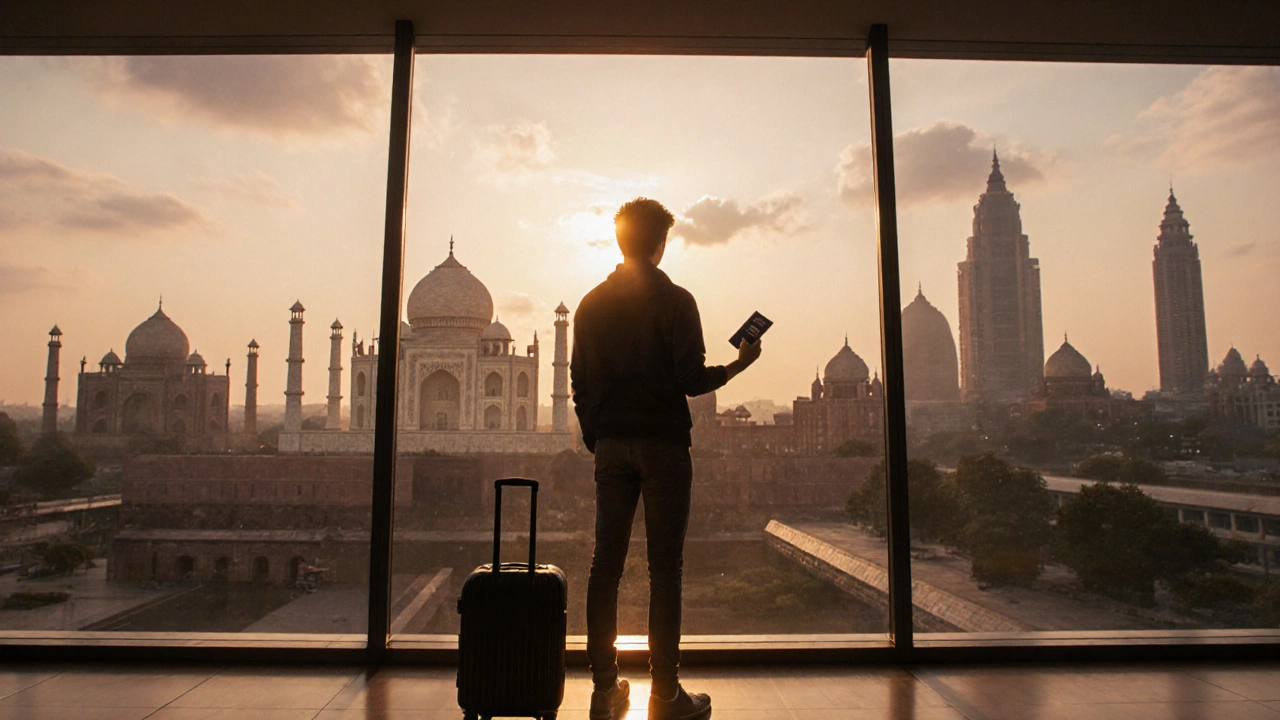When you ask yourself, "Is it safe for a US citizen to travel to India?", you’re looking for a clear, up‑to‑date picture of the risks and the steps you can take to enjoy a smooth trip. Below you’ll find the latest advisory, a rundown of the most common safety concerns, and practical tips that let you decide if you should book that flight today.
Quick Takeaways
- U.S. State Department rates India as a Level 2 (Exercise increased travel safety India precautions) as of October2025.
- Major cities - Delhi, Mumbai, Bengaluru, Chennai - have a higher incidence of petty crime but remain safe with basic vigilance.
- Health risks are dominated by water‑borne illnesses and seasonal dengue; COVID‑19 restrictions have been lifted, but vaccination is still advised.
- Political protests can flare up without warning; stay away from large gatherings and check local news.
- U.S. Embassy services in NewDelhi, Mumbai, Chennai, and Hyderabad are fully operational for emergencies.
Current Official Advisory
India travel safety for US citizens is a set of guidelines and risk assessments that help American travelers navigate health, security, and legal considerations while visiting India in 2025. The U.S. Department of State (travel.gov) rates the country at Level2, meaning you should "exercise increased caution". The rating reflects:
- Elevated petty theft in crowded markets.
- Occasional terrorist incidents in Jammu &Kashmir.
- Health alerts for dengue, malaria in specific regions, and COVID‑19 variants.
Embassy alerts are updated weekly; sign up for email notifications or follow the U.S. Embassy New Delhi Twitter feed.
Key Safety Concerns
Crime
Petty crime - pickpocketing, bag snatching - is most common in tourist hubs, public transport, and night markets. Violent crime against foreigners is rare but can happen in isolated neighborhoods. The Indian Police respond quickly to reported incidents, especially in major cities.
Health
Water‑borne illnesses such as traveler's diarrhea affect up to 30% of short‑term visitors who drink tap water. Dengue fever spikes between June and September, especially in Delhi, Kolkata, and coastal regions. The Ministry of Health advises the following:
- Drink only bottled or filtered water.
- Use insect repellent with DEET and wear long sleeves after sunset.
- Carry a basic medical kit (oral rehydration salts, antidiarrheal).
COVID‑19 vaccination (preferably a booster) is recommended even though entry testing has been dropped.
Natural Disasters
The monsoon season (June‑September) can trigger flash floods and landslides in the Himalayas and Western Ghats. Check the India Meteorological Department forecast before heading to hill stations.
Terrorism & Political Unrest
Jammu &Kashmir remains a high‑risk area; the Indian government advises U.S. citizens to avoid non‑essential travel there. Protests can occur in major cities; they are usually peaceful but can turn violent without warning. Keep an eye on local news apps such as Times of India or NDTV.

Practical Precautions
Documentation
Ensure your passport is valid for at least six months beyond your intended departure. The e‑visa system (valid for 60days, double‑entry) is the simplest route for tourism. Keep digital copies of your visa, passport and insurance on a secure cloud service.
Health Prep
Visit a travel clinic 4‑6 weeks before departure. Required vaccinations include HepatitisA, Typhoid, and routine immunizations (MMR, Tdap). The CDC also recommends a single‑dose Japanese Encephalitis vaccine if you’ll spend >1month in rural areas.
Money & Payments
Carry a mix of cash (Indian Rupees) and cards. ATMs are plentiful in urban areas but may be scarce in remote regions. Notify your bank of travel dates to avoid fraud blocks. Use a RFID‑blocking wallet for added security.
Transportation
Domestic flights, Indian Railways, and reputable ride‑hailing apps (Ola, Uber) are safe when used with verified accounts. Avoid unmarked taxis at airports; opt for official airport taxis or pre‑booked car services.
Local Laws & Cultural Norms
Drug possession carries severe penalties - up to 10years imprisonment. Public displays of affection are frowned upon in many areas; dress modestly when visiting religious sites. Photography of security installations or government buildings is prohibited.
When to Reconsider or Delay Your Trip
- If a major protest is announced in the city you plan to visit. \n
- If you have a compromised immune system and are traveling during the monsoon dengue peak.
- If you lack a reliable travel insurance policy covering medical evacuation.
In such cases, either postpone until conditions improve or choose a low‑risk region such as Kerala’s backwaters or Himachal Pradesh’s hill towns.

Essential Resources
| Entity | Phone | Website |
|---|---|---|
| U.S. Embassy New Delhi | +91‑11‑2419‑8000 | https://in.usembassy.gov |
| U.S. Consulate Mumbai | +91‑22‑2672‑4000 | https://in.usembassy.gov/embassy-consulates/mumbai/ |
| CDC Travel Health | N/A | https://wwwnc.cdc.gov/travel |
| Travel Insurance (e.g., World Nomads) | N/A | https://www.worldnomads.com |
Download the India Travel Safety app (available on iOS and Android) for real‑time alerts and offline maps.
Next Steps Checklist
- Check the latest U.S. State Department advisory for India.
- Apply for an e‑visa (minimum 72hours processing).
- Schedule a travel‑medicine appointment; get recommended vaccines.
- Purchase comprehensive travel insurance covering health and evacuation.
- Enroll in the Smart Traveler Enrollment Program (STEP) to receive embassy alerts.
- Pack a small first‑aid kit, insect repellent, and a portable charger.
Following this list dramatically cuts down the chances of an unpleasant surprise.
Frequently Asked Questions
Do I need a visa to travel to India as a US citizen?
Yes. Most tourists use the e‑visa system, which grants a 60‑day stay for tourism and business. Applications are submitted online, and approval typically arrives within 72hours.
Is it safe to travel alone as a woman in India?
Solo female travel is common in major cities and many tourist destinations. Stick to well‑lit areas, book reputable accommodations, and use trusted ride‑hailing apps. Many women report excellent experiences when they follow basic safety practices.
What health precautions should I take before going?
Visit a travel clinic 4‑6 weeks ahead. Get HepatitisA, Typhoid, and a COVID‑19 booster. If you’ll be in rural or forested areas for more than a month, consider the Japanese Encephalitis vaccine. Carry oral rehydration salts and practice food‑and‑water safety.
Should I avoid any regions entirely?
Non‑essential travel to Jammu &Kashmir, especially the Line of Control areas, is discouraged due to heightened security concerns. The rest of India, including popular spots like Delhi, Mumbai, Jaipur, Kerala, and Goa, remains open for tourists who take standard precautions.
How reliable is public transport?
Indian Railways is extensive and generally safe for day trips, but book AC classes and keep valuables locked. Buses can be crowded; for long distances, reputable private coach operators are preferred. In cities, metro systems (Delhi, Mumbai, Bangalore) are modern and secure.
